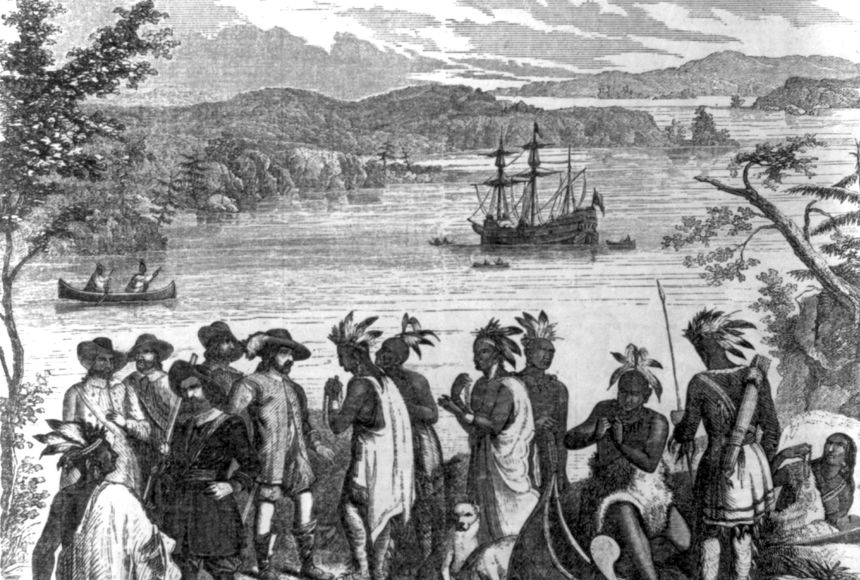ARTICLE
leveledARTICLE
The New England Colonies and the Native Americans
The New England Colonies and the Native Americans
While Native Americans and English settlers in the New England territories first attempted a mutual relationship based on trade and a shared dedication to spirituality, soon disease and other conflicts led to a deteriorated relationship and, eventually, the First Indian War.
Grades
3 - 12
Subjects
Social Studies, U.S. History
Image
Hudson Trading with Native Americans
Native American locals and English colonists had a complicated history in America that involved conflict as well as trade. They traded goods and ideas. Here, English explorer Henry Hudson and his crew trade with Indians on the shore.
Engraving from the United States Library of Congress

Media Credits
The audio, illustrations, photos, and videos are credited beneath the media asset, except for promotional images, which generally link to another page that contains the media credit. The Rights Holder for media is the person or group credited.
Director
Author
Production Managers
Program Specialists
Producer
other
Last Updated
October 1, 2024
For information on user permissions, please read our Terms of Service. If you have questions about how to cite anything on our website in your project or classroom presentation, please contact your teacher. They will best know the preferred format. When you reach out to them, you will need the page title, URL, and the date you accessed the resource.
Media
If a media asset is downloadable, a download button appears in the corner of the media viewer. If no button appears, you cannot download or save the media.
Text
Text on this page is printable and can be used according to our Terms of Service.
Interactives
Any interactives on this page can only be played while you are visiting our website. You cannot download interactives.
